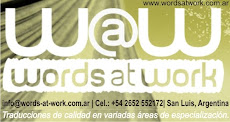by José Luis Coria
Agronomist
joluco_22@hotmail.com
Autumn will very soon embrace, so to speak, the beautiful and varied universe of plants, thus forcing them to go through the silent road to rest, until spring comes.
The first sign of summer falling behind will be foliage colour change. The species of deciduous leaves will start falling, leaving trees naked. These leaves will form ocher-coloured paths that will provide a shelter to tiny animals, like worms and larvas, and will transform into fertile soil thanks to the action of decomposers.
We must leave nature act, and start thinking about what to do with our plants from the first frosts. That will be the moment of pruning – one of the arts of gardening. This task must be done by skilled people to avoid damaging plants. Each of them requires different procedures, according to the species and also to the state they are in. Pruning citrus fruit trees is not the same than pruning stone fruit trees, rose trees or a grapevine.
The gardener will know which branches should be removed, either because they are dry, sick, or because of any of the typical plagues attacking plants. By the same token, a specialized person will also be able to determine what type of shape a tree top requires to favour the intake of sun rays. For cuts larger than 10 cm, the technician will apply cicatrizant products to prevent plagues from setting in the openings. It is absolutely vital that the tools used be completely disinfected.
The pruning season starts on the first days of June, and extends up to the middle of August; doing it otherwise will imply high risks for the plants.









